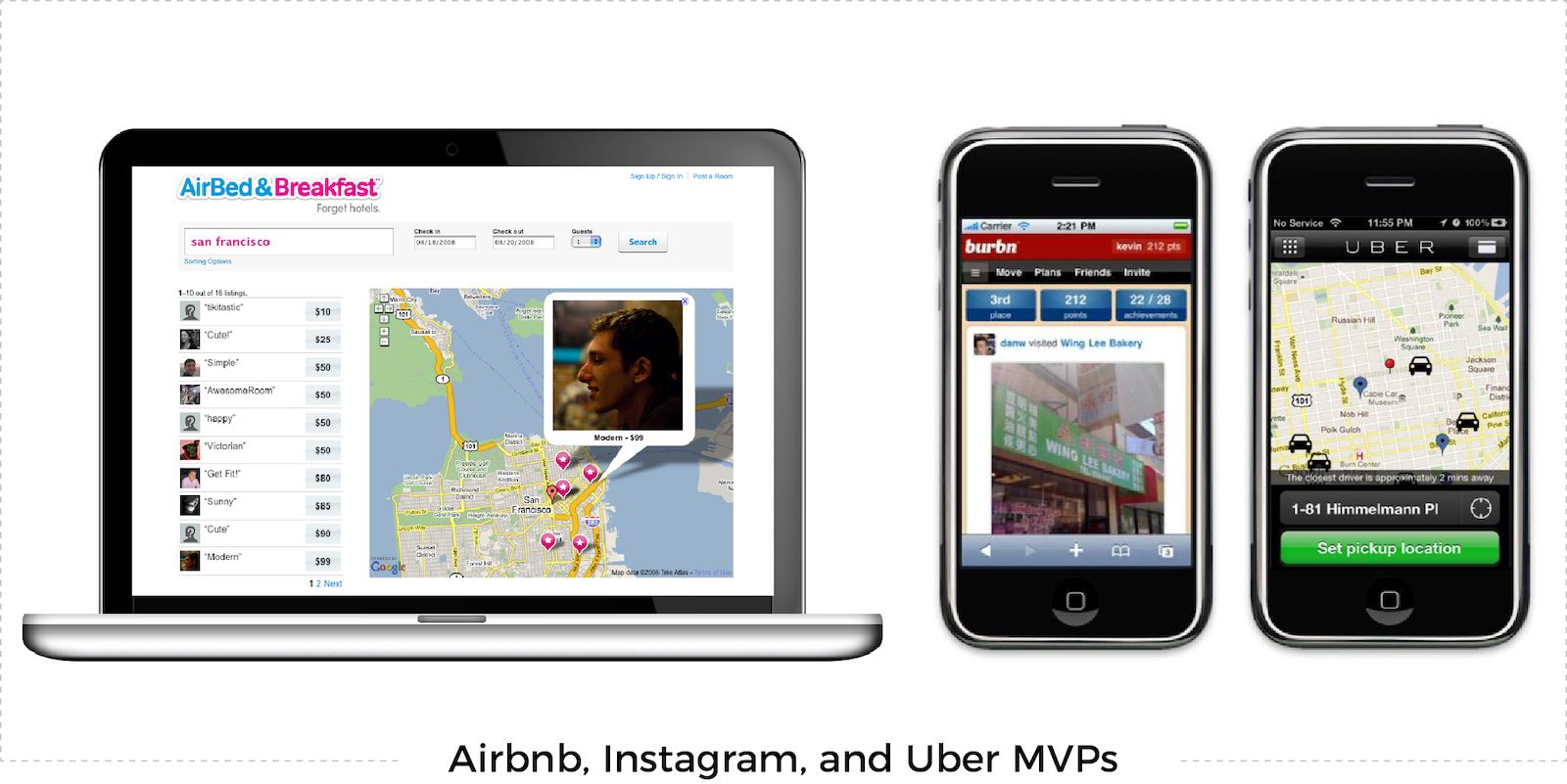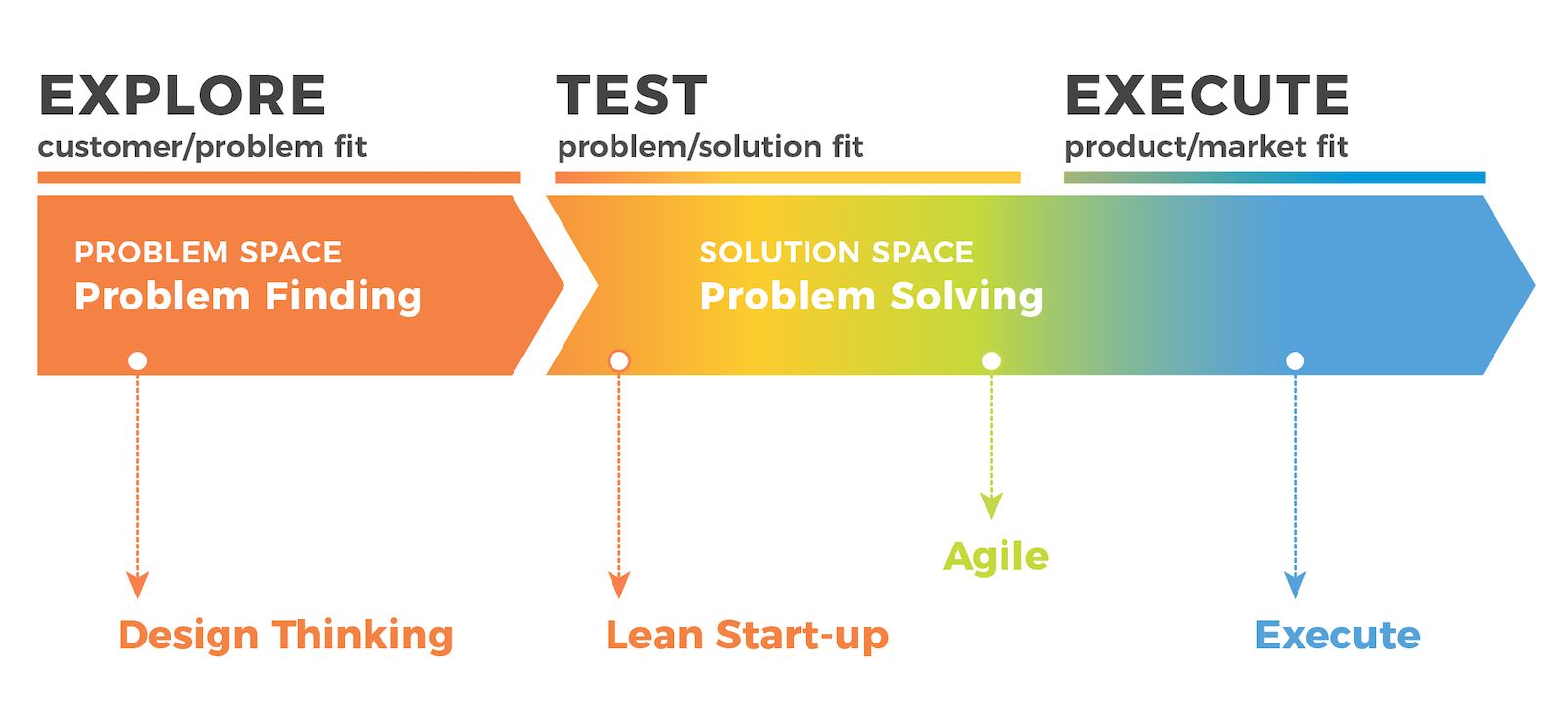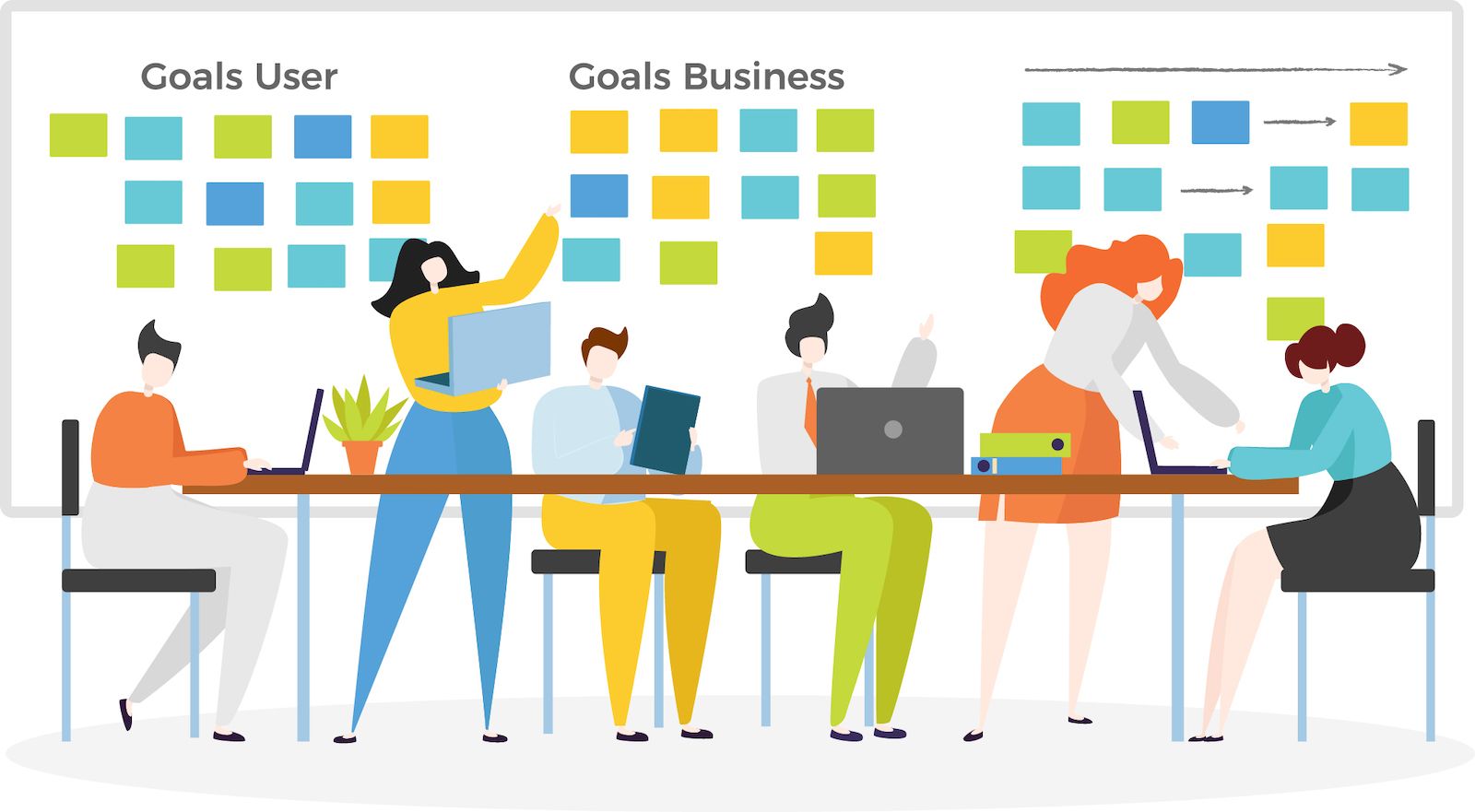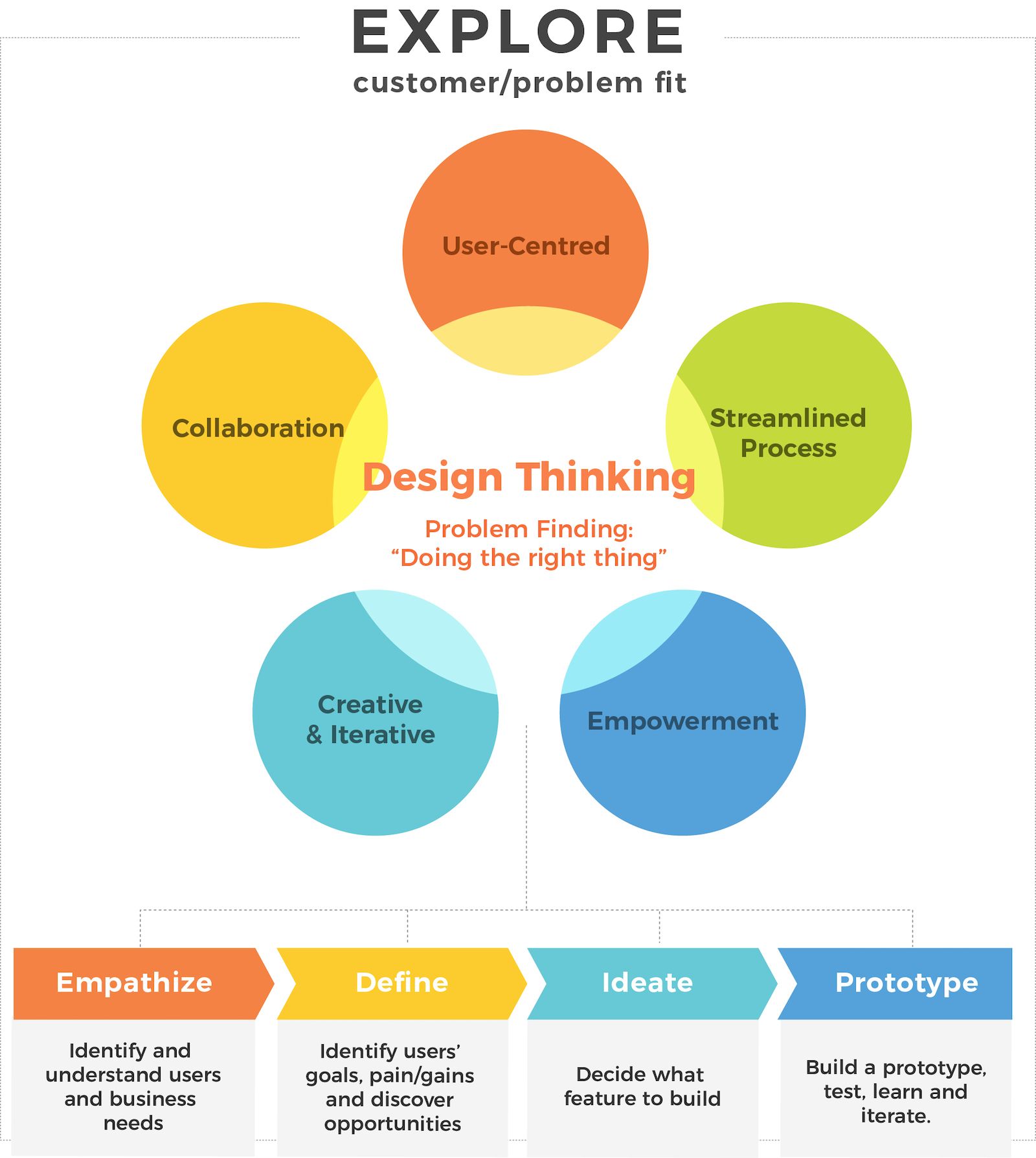
What do Uber, Airbnb, Instagram, and even the iPhone have in common? Aside from being groundbreaking, disruptive, and wildly successful services and products, they all share a respective point of origin – they all began as an MVP.
MVP or Minimum Viable Product is a concept publicized in Eric Ries’ Lean Startup that emphasizes learning in new product development. It can be defined as a version of a new product that carries “just enough” features to engage and satisfy early adopters, from which feedback can be gathered and learned from for future development.

Typically, any new product development is a costly endeavour – that is, until enterprises started to borrow from the startup playbook. Now, and through the utilization of MVP, organizations can develop quickly, reduce their new product development costs, de-risk their investment, test the concept in the field, learn from their users, and iteratively add new features.
Today, you are not only going to learn how to develop and plan an MVP but how to do so with the help of the Design Thinking process to put an unprecedented focus on what matters most – the user.
Why Design Thinking?
When it came to new product development, typically, resources were allocated towards projects that “sound like a great idea” and because of that, were given time, people, and budget to explore. Sadly, and as I am sure many can relate to, this has time and time again proven to be an inefficient waste of valuable resources.
Fortunately, there is a new school of thought, one that doesn’t say “that sounds like a good idea,” or at least, doesn’t until the question “where’s the proof that this is a good opportunity to spend resources on” is answered. This is where Design Thinking comes in to play on the innovation lifecycle.

Design Thinking plays a crucial role in the initial part of the innovation lifecycle by helping find the “customer/problem” fit: what’s the right problem to be solved for the target customer segment? In this phase, the goal is to “invent the future” by discovering the unmet needs of the users and the unsolved problems he/she wants to be solved.
But how exactly does Design Thinking help with defining and planning an MVP? It first helps by exploring the customer/problem fit in order to find the right problem and “do the right thing.” And that is done by empathizing, defining, ideating, prototyping, and testing.
Design Thinking for MVP Validation
1. Identifying & Understanding Business Needs
Everything begins as a small idea for something new or innovative. But how do you know the idea is valid or worth investment? In other words, how do you know your business value proposition is, in fact, valuable?
One of the hallmark characteristics of Design Thinking is its emphasis on collaboration, specifically, involving everyone related to the business, from designers to developers and from business owners to the market at large. By inviting them to work together, it provides diverse perspectives on the concept being proposed and can help identify the market and business needs behind the idea to determine long-term goals of the product, solidify a shared vision, affirm the reasoning behind the project, and define success criteria.
Through this collaboration, organizations can leverage the unique knowledge of different stakeholders and customers to discover the most valuable opportunities and to create a sense of support and ownership for the project that will not only accelerate its implementation but minimize the risk of failure while improving the potential for innovation.
2. Identify Users & Discover Opportunities
Aligned with your business value proposition, identifying users and their unique needs is mission critical. After all, it is bad business to build something that nobody wants. So how do you make sure there will be users for your potential solution? How do you identify them? What are their needs?

Design Thinking is also known as human-centred design and as such, requires working with clients, stakeholders, and customers to bring real user outcomes. With this user-centred approach, it emphasizes on not only understanding the user but identifying their current experience, goals, and needs in order to help determine what the real problem(s) is/are. This is achieved through a combination of quantitative and qualitative user-research methods specifically designed to answer the key questions about user behaviours, preferences, habits, and value proposition. The value of this approach is that it prevents the False-Consensus Effect, which is a bias in which people tend to overestimate the extent to which their opinions, beliefs, preferences, values, and habits are normal and typical of those of others. While hard to admit, it is prudent to remember that “you are not the user,” and it is worth investing time and effort in understanding the context of ‘real-users.’
3. Decide what Features to Build
By now, you should have identified your users, their unique needs, and your business value proposition. However, you may have also noticed something else happening in tandem – your idea has started to turn into something a lot more tangible. When that happens, you know it is time to visualize and begin designing the core features.
Collaboration during the brainstorming process is vital to finalizing the list of core features to be developed. This list should be based on collected opportunity statements, a detailed product roadmap based on a breakdown of the proposed features, and finally a matrix that prioritizes them. Keeping the end-goals in mind of both the user and the business, reviewing the product from different points of view, and utilize the diverse expertise available to you will all aid in you not only making the right decision but “doing the right things.”
Design Thinking Workshops specifically employ tools, methods and techniques to bring out the best ideas through a collaborative way. They are quite different from typical meetings and discussion sessions where power-distance relationships, personality types, and organizational culture often gets in the way of collaboration.
4. Build a Prototype, Test, Learn & Iterate
Building a quick prototype is the best way to allow users to test the concept and provides valuable information to designers, developers, and product managers on how the users will interact with it. Once done, you then iterate on that prototype accordingly to user feedback before building your actual MVP. This has proven to be the fastest, most cost-effective way to build and validate the product concept before spending a lot of time, money, and effort to build and launch it.
It is stated by IDEO, “If a picture is worth a thousand words, a prototype is worth a thousand meetings!”

explore a customer problem with design thinking method
Empathize. Identify and understand users and business needs. Define. Identify user’s goals, pain/gains and discover opportunities. Ideate. Decide what feature to build. Prototype. Build a prototype, test, learn and iterate.
While the MVP consists of core features, it is essential to remain nimble. Products must evolve based on the market and user’s needs down the road. It is through tests and feedback that you will learn if assumptions about your product idea are indeed valid. However, sometimes (and in some cases, often) it will turn out your assumptions are not validated based on the feedback, or they may just be in fact, wrong. But don’t worry – this isn’t a bad thing. You want to fail early and fail cheap on your way to building a better product.
Design Thinking for MVP & Beyond
Digital products and the ecosystems they call home are dynamic, constantly evolving – much like the users, their needs, and expectations. And it is in this environment that we see the unparalleled value of the design thinking methodology and its user-centred approaches, early user engagement, and collaborative nature flourish. By utilizing design thinking to address the real needs of the users and in turn, “do the right things,” this practice will make all the difference in not only delivering innovation and value to the market but has the power to transform an organization and its people.
By now, you know how to create an MVP utilizing Design Thinking, but that is only half of the equation. After you establish what you want to test with your MVP, you then must choose which MVP validation method will provide you with the most reliable and actionable data from real-life users; techniques, that we will cover in an upcoming article.



